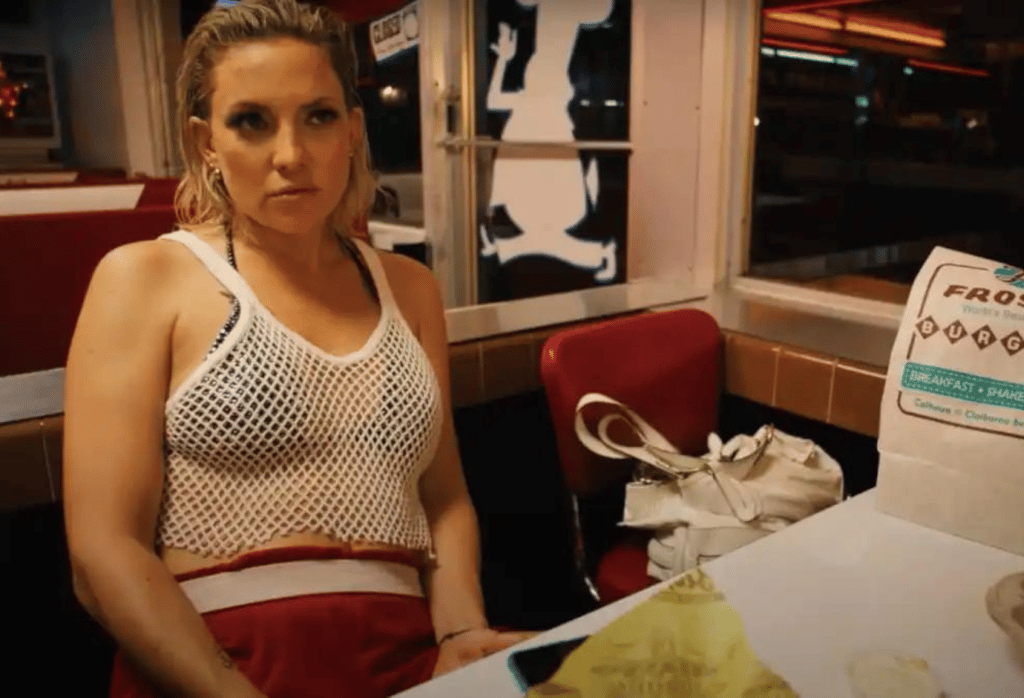There is a certain kind of sleek, edgy ambience only few filmmakers know how to pull off.
Ana Lily Amirpour manages to sustain a remarkably vivid palate of nocturnal darks and neons in her latest fantasy thriller, “Mona Lisa and the Blood Moon”, which stars South Korean actress Jeon Jong-seo, known for her role in “Burning”, and Kate Hudson.
The film opens on the night of the full moon, where Jong-seo, playing our titular character, is restrained in a straitjacket, inside a cell in a psychiatric facility on the outskirts of New Orleans. When a white nurse enters to coerce the young patient into an unpleasant pedicure, Mona takes over the nurse’s mind, forcing her to violently inflict harm to herself. It’s a trope we’ve seen since the 90s — in The X-files, Japanese and Korean horror — where victims are overtaken by an evil demonic spirit and wound or kill themselves, often in dramatically violent ways.
I was worried this film would leap into this territory. Thankfully, it never does.
This first scene never reaches the gory heights of slasher horror. In fact, none of the subsequent victims of Mona endure the gruesome torture we might see from adjacent films. Instead, Amirpour turns the film into a more lyrical, patient surveillance of New Orleans and its spacial, porous atmosphere.
After escaping the psychiatric facility, Mona walks by foot towards the city. Here, the scenes are weaved stylistically into a poppy sequence of industrial and urban visuals, recalling the beats of a mid-naughties post-punk music video. Our heroine traverses the forsaken landscapes barefoot, sporting a bloodied straitjacket with sleeves that sweep the ground. Her hair is long and black — she looks like the terrifying embodiment of the girl who steps out of the television screen in “The Ring.”
A group of random yet kind strangers provide help — teens drinking by an oil-barrel fire offer her beer and shoes. A man outside a convenience store pays for her food.
Her face and its pallid skin is always lit against the blinding white light of artifice — store lights, street lights, cop car lights.
When she is finally located by a policeman (Craig Robinson, in a very cleverly cast role) her attire has graduated into an oversized tie-dyed T-shirt, with a large, orange circle at the centre, resembling the sun.
She escapes his arrest by possessing him, before making her way to a 24-hour road-side diner, remediating the spacial conceit of the heroine’s plight towards independence and freedom in a comic scene between the internal (inside the diner) and external (outside, where Mona stands, waiting).
It is here, outside the diner, where she comes to the aid of Bonnie (Hudson) who finds herself in a physical altercation with a scorned woman. Mona uses her demonic powers again to save Bonnie from further harm.
It is only through this new bond that Mona finds herself inside the diner, sitting across Bonnie in a booth, stuffing her face with a burger — her appetite for her stomach and for her life, aggressive and voracious.
“I’m not going back there,” she whispers to Bonnie. Then, in her most impressive scene — explodes; “I DON’T WANNA GO BACK THERE!” pouncing on her seat, throwing her food in the air. Jong-seo has a dynamic range, often transitioning from a sweet, docile demeanour into a raging, forceful beast within a few beats.
From one evocative space to another, we follow Mona as she tags along to Bonnie’s place of employment — a strip club, one of hundreds along the main streets of New Orleans. Hudson’s movements appear so flawless on stage — she’s mesmerising, breathlessly captured by the blue strobes and bright pinks of the strip club. We visualise her sensuality through Mona’s eyes too — she is a child, really, innocent and pure, unsure why Bonnie does what she does in front of a row of men.
When a disgruntled frat-boy tips Bonnie just $2, she appeals to her new friend — soon, the frat boy and his friends are involuntarily giving away all their money.
On the surface, this film can read like a simple thriller of girl gone wild in town. Yet Amirpour is rarely reductive — guiding the story into a new section once Mona is brought back to Bonnie’s home, where she meets her 11-year old son, Charlie (played earnestly by Evan Whitten).
The emotional drive of this film is located here, in this friendship between Mona and his precocious young tween, who share a tender scene in a laundromat where the young boy draws a portrait of his elusive older friend.
Their suburban surroundings is set against the intensive, nocturnal scenes of night-life, the closed, quiet quarters of the home pitted against the urbane twinkling hub of the strip clubs, where Bonnie fills her evenings. Hudson is cast against her usual charismatic good-girl role, though she retains her charisma and flair.
It could have diverged into an exploitation plot line — where a white woman takes advantage of a vulnerable young Asian woman. Yet this friendship between Charlie and Mona takes over the third act of the film, propelling us to a remarkably tight and surprising ending.
Throughout the film, our gaze is transfixed on the hypnotic transitions of space — outside space dissolves into the inside both nostalgically and suspensefully — the characters faces rendered through sharp lighting.
Mona’s translucent skin is cast against stark, primary colours, making her feel like some aerial, yet not-full-present omniscience. The film is a powerful testament to physiological trauma, managing to weave a romantic gesture to the city of New Orleans at the same time.
Mona Lisa and the Blood Moon will be showing at the Sydney Underground Film Festival, between 8-11 September.


